Playing Chord Progressions in any Key – Transposing on Guitar
If you’re looking at chord progressions in terms of their roman numeral/number representations, a skill you want is to be able to play the progression in any key.
On guitar there’s really two ways to achieve this. The first is to know the letter name of each chord in any key.
So if you’re looking at the progression:
I – vi – ii – V
Then in say C major you would instantly know the I is a C chord, vi is an Am chord, ii is a Dm chord and V is a G chord.
So you have
C Am Dm G
You then need to know this in all 12 keys. So in E the progression would be
E C#m F#m B
Another method that does not require this is to use the geometry of the fretboard. To illustrate this, let’s make the distinction between the tonic of a key and the root note of a chord.
The tonic of a key is the I degree of the key. So In the key of C the tonic is C. Likewise, in the key of E the tonic is E.
The root note is in relation to the chord rather than the key.
So if we are in the key of C major and playing the chord progression:
C Am Dm G
Then the root note is changing for each chord. It is C over the C chord, A over the Am chord, D over the Dm chord and G over the G chord.
As the key through the whole chord progression is C major and all these chords are formed from the C major scale, then the tonic note through the whole progression is C.
By keeping in mind the location of a tonic note on the fretboard, you can use your existing fretboard knowledge to find the root note of any chord formed from any scale degree of the key. You can do this without actually needing to know the letter name of that chord.
So for example, in the key of C, the 6th string 8th fret is a C. If you need to play a IV chord, and you know a IV is located on the same fret as the tonic but one string higher then we know our IV chord can be played with a root on the 8th fret of the 5th string. And you can find this chord without needing to think of the letter name of the chord as F. And no matter what key you’re in this will work. Providing you know the position of the tonic of the key on the 6th string you can always find the IV chord as it has a root on the 5th string with the same fret as the tonic.
Let’s now look at some ways to be able to do this for all 12 root notes in a key.
An easy way to do this is to find the position of the chord with the root of the chord on either the 6th or 5th strings.
Some chord shapes you might use for this are:
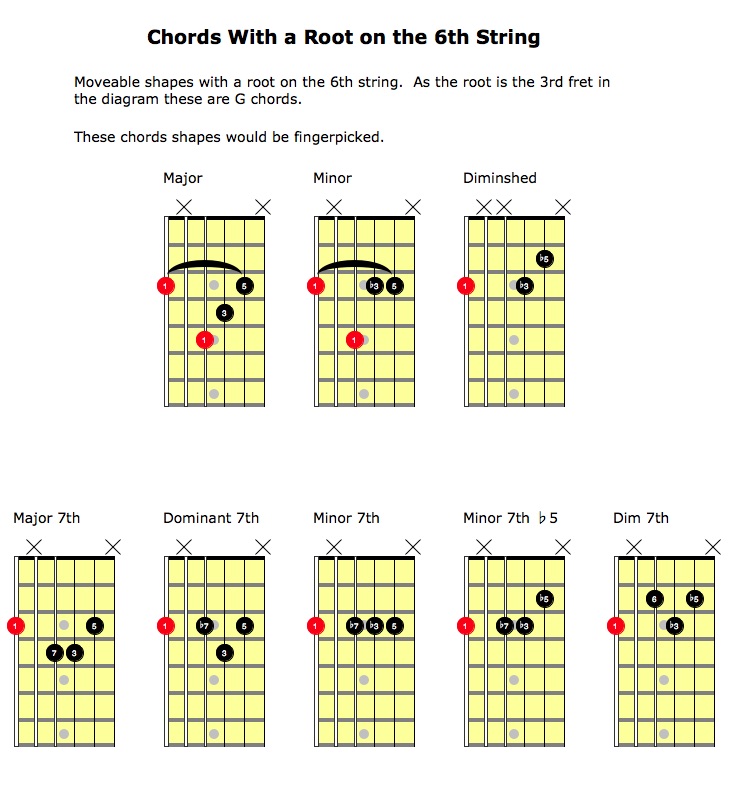
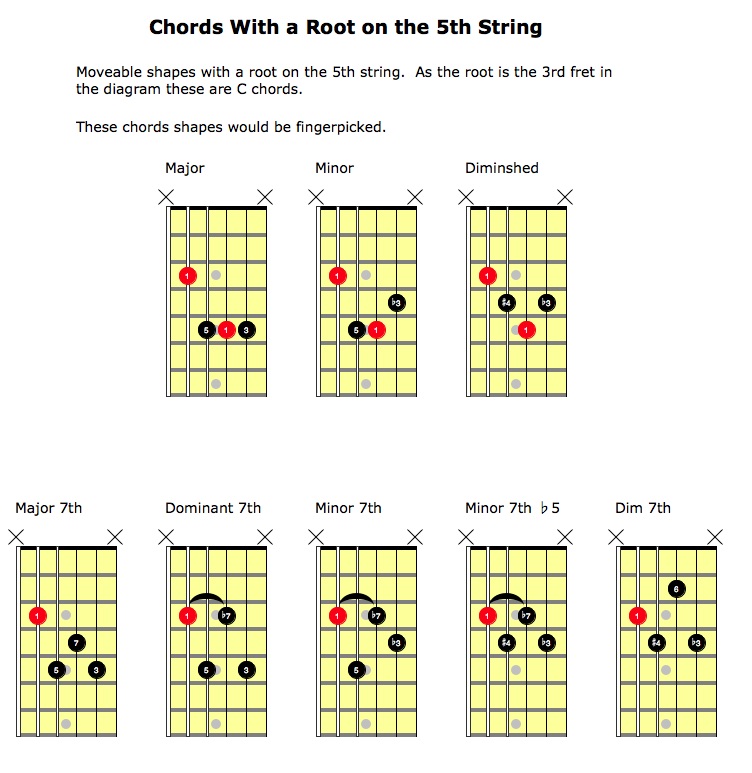
These chord shapes are ideal for fingerpicking. Alternatively you could use the standard barre chords with root notes on the 6th or 5th strings for strumming with a pick.
Say you’re in the key of C. The 6th string, 8th fret is a C. The root note of the chord on any scale degree in the key of C can be found on the 6th or 5th string by moving no more than 3 frets away from the C on the 8th fret as follows:
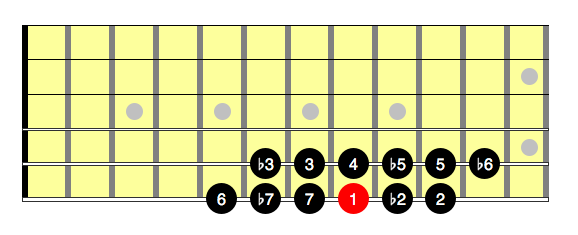
This is then movable up and down the neck for different keys, so in the Key of A we have:
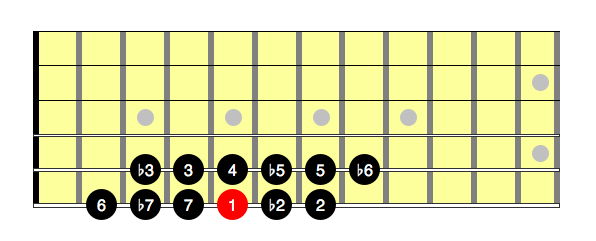
So providing you know the chord forms you need with the root on the 6th and 5th string, you can use this knowledge to play any chord progression in any key. Say you want to play
I – V – vi – IV
in the key of A. Start by knowing that A is the 5th fret of the 6th string. This then gives us the chords:

Consider this diagram to see how these chord positions were determined from the above fretboard geometry:
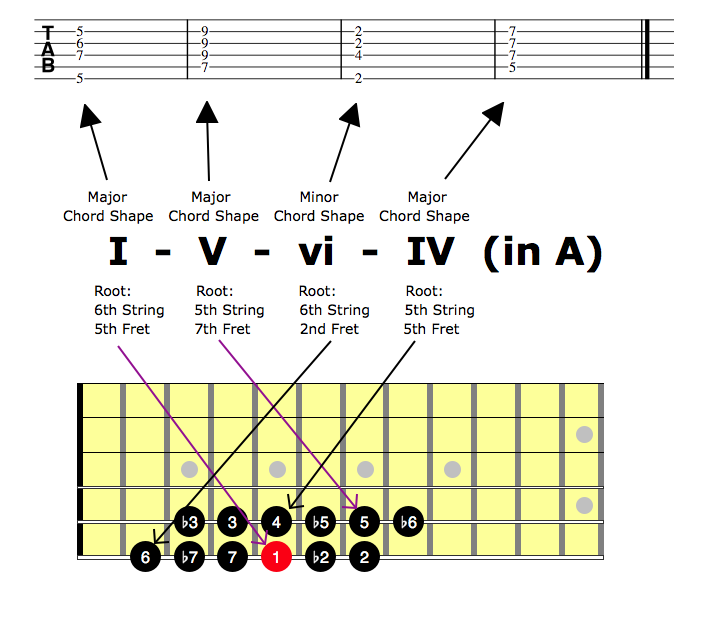
Essentially, from our roman numeral representation of the chord progression, we start by knowing the scale degree of the next chord and the chord type (e.g. major or minor). The fretboard geometry as illustrated above along wth the scale degree gives the location of the chords root note (in terms of its fret and string). We then have our chord shape to build on that root note from our knowledge of chord shapes.
For an example in C minor, if you wanted to play
i – iv – ♭VII – ♭III
in C minor, you would have
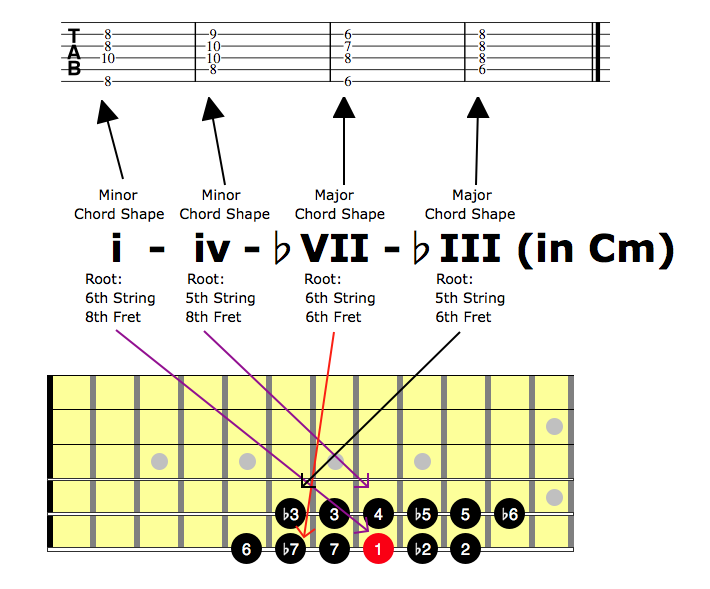
Similarly for the tonic of the key on the 5th string, you can also find a 5th or 6th string root note for any scale degree of that key by moving no more than 3 frets from the tonic on the 5th string. In the key of D this is as follows:
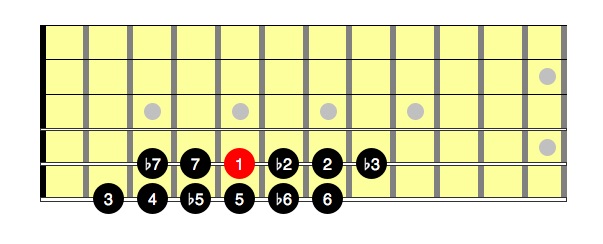
Once again, this is moveable so in the key of F# you would have:
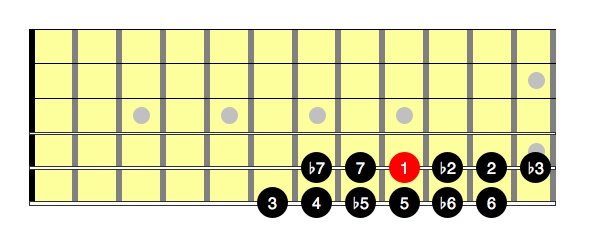
So if we wanted to play say,
I – vi – ii – V
in the key of F#, we would identify our F# as the 9th fret of the 5th string then use this geometry to find the root notes of each degree in the chord progression giving us the chords:
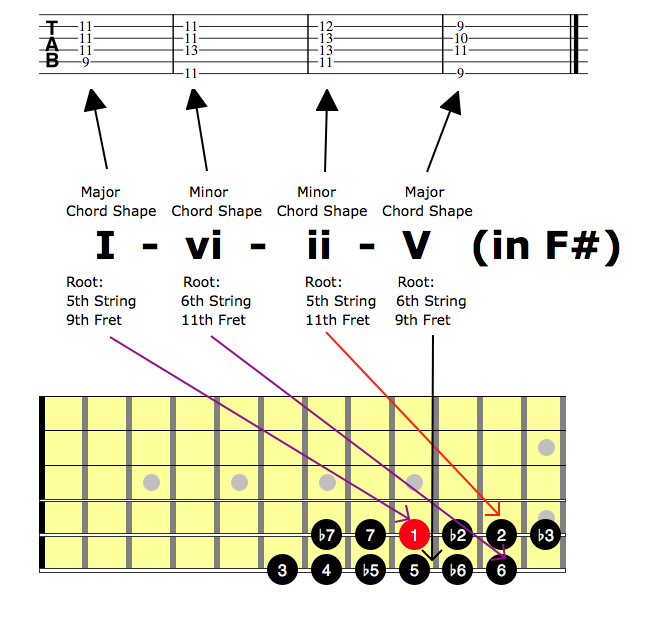
If we wanted to play
i – ♭III – ♭VI – iv
in D minor we would have:
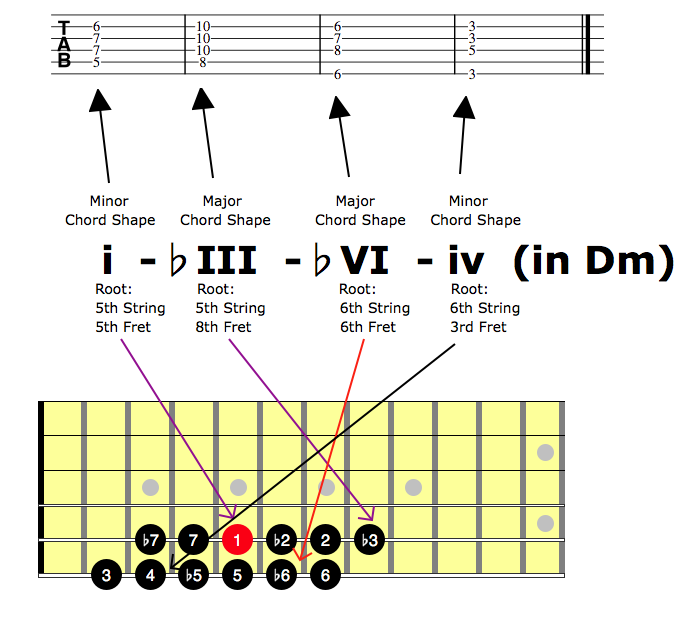
With both of these methods at our disposal (the tonic on the 6th and 5th string) we can now play a chord progression in any key with two choices of chord position simply by knowing the location of the tonic note on both the 6th and 5th strings. And we can do this without having to actually think of the letter names of chords in the given key, but simply know their scale degrees (or roman numeral representations).
This concept can expand to include all your fretboard knowledge.
I find it useful to be able to form chords around a root note on any of the 6 strings. You can then do things like use your knowledge of the CAGED system, the intervals of each CAGED position and major and minor scale patterns to find root notes for the different scale degrees from the CAGED patterns anywhere up the neck. I might devote some more articles to this sort of thing in the future.
Additionally, if you’re experimenting with soloing where you are changing scales with each chord change. Just as we have been able to use this sort of geometry to find the positions of root notes of chords, you can also experiment with finding the root notes of the scales you’re using for each chord using the same sort of geometry.
I hope this is useful and encourage you to use this sort of geometry to explore playing different chord progressions using the various chords that are common to a given key.
